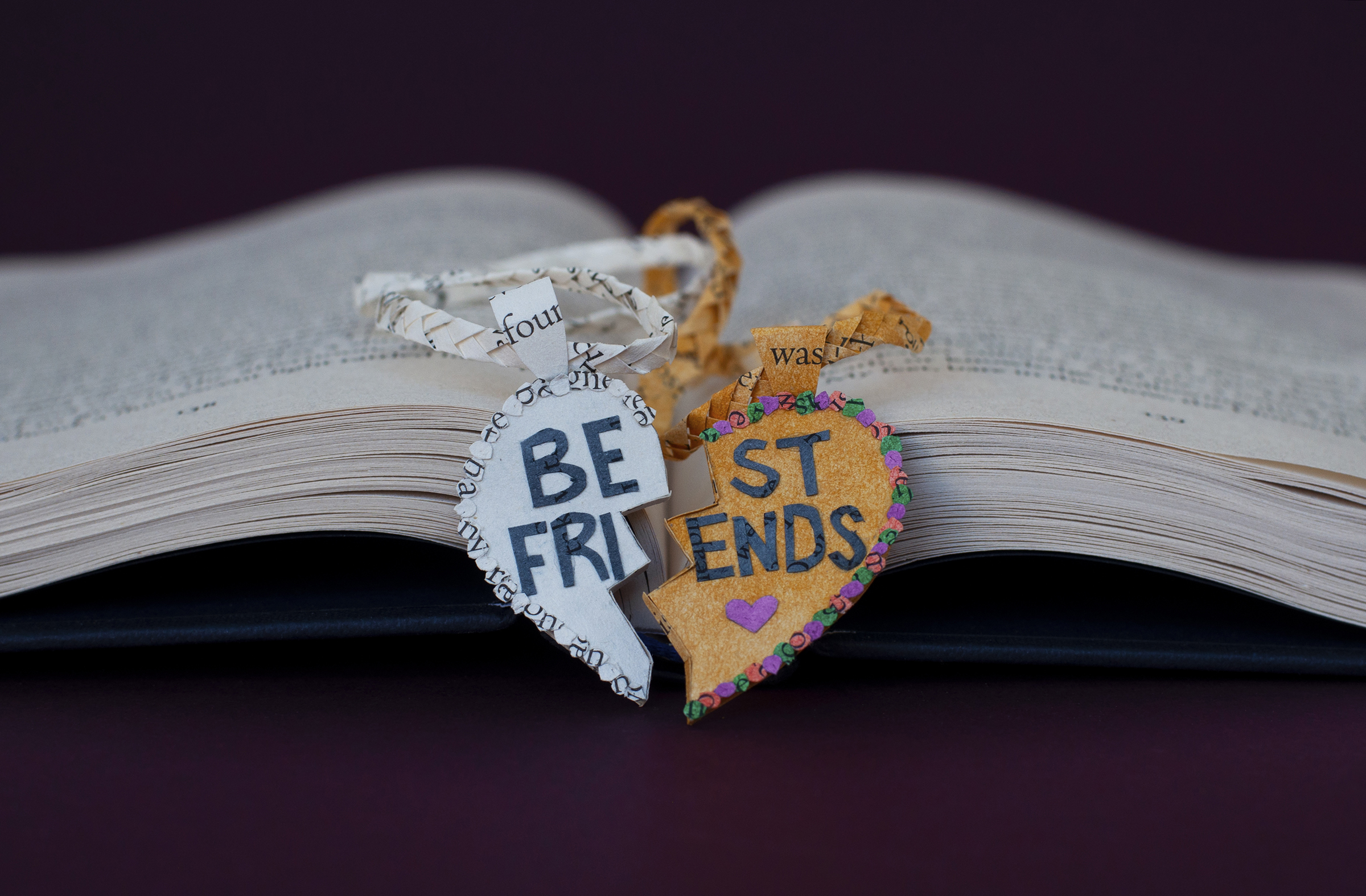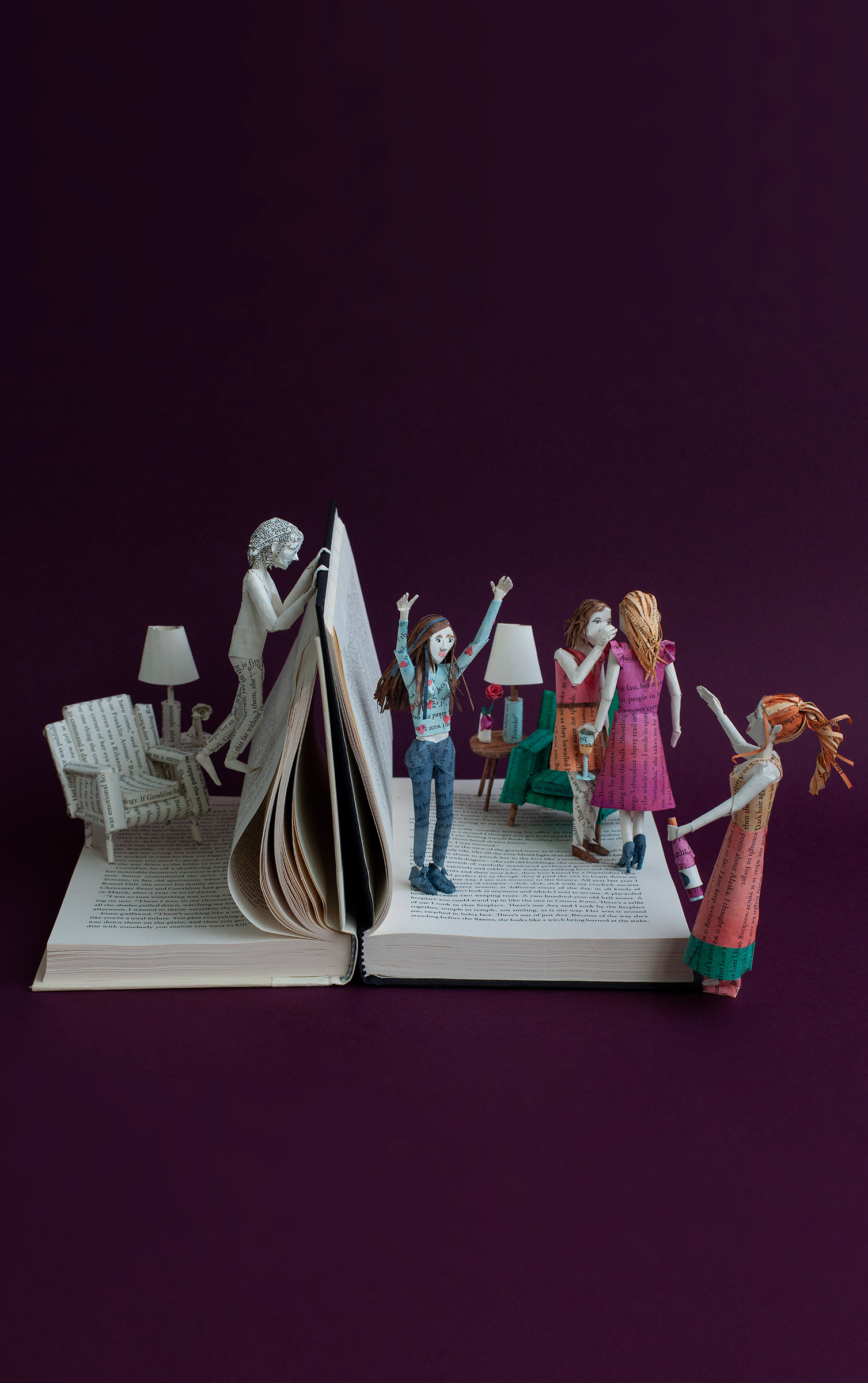
Friendships between women — especially among groups of women, where tendrils of energy and intuition entwine and collide like the offshoots of willful plants — seem to come with so many attendant complications. Ideally, everyone is growing toward and reaching for the same sun. But what if you’re battling for the same air and water? What happens when petty resentments become destructive lesions, or when envy chokes off reason? The promise women have made to one another, once unspoken but now a kind of noisy anthem, is that all women must support one another, all the time. But deep in our hearts we know it can’t always work like that, perhaps especially with those who are closest to us. Because women are people, and conflict between people is inevitable. Familiarity may nourish intimacy, but it can also breed that other thing, as damaging to a friendship as drought is to greenery.
Luckily, we have fiction to help us sort through these issues vicariously. Three new novels arriving in June examine, at close range and sometimes in painful detail, the intricacies of friendships between and among women: In Mona Awad’s Bunny, a clique of preening girl-women in a graduate program welcome an outlier into their group, with unsettling consequences. Lauren Mechling’s How Could She details the on-again, off-again friendship, fraught with jealousy and anxiety, between three women in the unstable world of New York media. And in The Paper Wasp, by Lauren Acampora, an awkward, solitary aspiring filmmaker languishes in her Michigan hometown, gazing from afar at the much shinier life of her childhood best friend turned Hollywood ingenue. Portions of these books are funny; some passages are eerily poetic. But each turns over that rock that most of us prefer not to look under, unafraid to face what may lie beneath.
Before the 20th century, novels about friendships between women were relatively uncommon: in the 1800s, Jane Austen explored sisterly bonds of affection and tension, and in Jane Eyre, Charlotte Brontë emphasized the brief but formative friendship between the heroine and her classmate Helen Burns. Only later did novelists truly begin exploring female friendships, especially in popular fiction. The 1920s brought us the man-hunting antics of Lorelei Lee and her friend Dorothy in Anita Loos’ Gentlemen Prefer Blondes. In the 1960s, Mary McCarthy explored the interlocking ambitions and disappointments of eight Vassar graduates in The Group. And in Waiting to Exhale, published in 1992, Terry McMillan traced the bonds linking four middle-class women as they lovingly navigated a period in their lives when there was no Mr. Right in sight.
But friendship isn’t always about unconditional support. That’s one of the angles Awad, author of 2016’s 13 Ways of Looking at a Fat Girl, covers in Bunny, a chronicle of complex friendships that are largely about calculation. Samantha, a student in an M.F.A. writing program at a tony New England university, doesn’t come close to fitting in, either in terms of the amount of money she has (none) or the subjects she focuses on (the darkness of the human soul). And she detests her workshop cohort, a group of ultra-feminine women whom she and her only friend, a no-nonsense, fishnet-wearing local named Ava, have nicknamed the Bunnies, because they cloyingly refer to one another as Bunny.

When the Bunnies draw Samantha into their circle, she finds out what they’re really up to: it involves magic, dreamboat men and actual rabbits. Bunny is a kind of pastel-toned goth lit, an examination of what happens when “soft” femininity meets the tougher kind — but one that also recognizes how blurry the distinction can be. The Bunnies have created a shared identity grounded in a superficial vision of womanhood, asserting — and not wrongly — that it’s O.K. to wear flashy dresses and lipstick and elaborate hairstyles if we want to. But the Bunnies’ aggressive girliness is just a mask for their selfishness and cruelty. Samantha trades her one true friend for a set of false ones, a clique whose embrace, literally and figuratively, is restrictive. She recoils when the Bunnies move in for a group hug: “The blob nods its four heads vigorously … It mashes its many-boobed body into my face so I can’t breathe anything but grass and cupcake perfume.”
This isn’t your garden-variety — or even your rabbit-hutch — view of feminist sisterhood. But Bunny is also an exploration of untapped power. In some ways, it’s a spiritual cousin to Stephen King’s Carrie, an inquiry into the sorts of things a woman might do when those around her have pushed past her limit.
Like Bunny, Mechling’s women-in-the-city comedy of manners How Could She focuses on women seeking to communicate with the world through their art, or even just through their craft. Sunny is a successful Canadian artist and magazine columnist living in New York City with her rich husband. Her friend Geraldine is stuck in Toronto but longs to move to New York, where she hopes to jump-start her own magazine career. Rachel, the sole American, is a wife and new mother who has just started writing young-adult novels; she’s friends with Geraldine but has never much cared for Sunny. Then these allegiances shift, and Mechling captures the prickly feelings of possessiveness and isolation that creep in when two people in a triangle — even a platonic one — draw close, shutting out the third. Add to that the stress of trying to make a living when you’re a woman on the far side of 30, in a field that’s almost no longer a field yet is still dominated by men. How Could She has a vibrant modern energy, and it gets how hard it can be to preserve friendships when we’re so busy going after everything else we want in life.
While Bunny and How Could She focus on friendship among groups of women, Acampora’s The Paper Wasp fixes its gaze on one magnetic and increasingly twisted friendship, between withdrawn artist Abby and rising Hollywood star Elise, childhood friends drawn back together by their high school reunion. Abby has been obsessed with Elise for years, and seizes the opportunity to insinuate herself into every corner of her prodigal friend’s life. But before long, her infatuation segues into repulsion. The character who starts out as the insecure underdog ends up as — well, something else.
The Paper Wasp is more hypnotic and sensual than either of the other books in this recent crop, which also makes it more potent. Acampora’s prose has a seductive, pearlescent allure, even when she’s addressing doomed friendships, friends who can never live up to our expectations, friends who betray.
Abby, unlikable but not wholly unsympathetic, sees through people to the point of looking right past them. She’s no kind of role model, and you’ll be glad you don’t have any friends like her. (Or at least I hope you don’t.)
In fact, none of these books offer any consoling way forward in dealing with the thorniest parts of our own friendships. Maybe, instead, their collective spikiness is a kind of safety feature, thrashing a clear space where we can examine our own anxieties about how women are supposed to relate to one another. All three of these novelists come right out and say certain things that many of us wouldn’t dare speak aloud: Women aren’t automatically great just because we’re women. Sometimes, in fact, we’re dreadful. Sometimes we like men better, simply because they’re not women. Is that such a sin?
And yet there are things our women friends can give us that men just can’t. It’s no wonder we always come back. We expect the most from our female friendships, maybe because we expect so much from ourselves. In the workplace and outside it, women work hard at being superhuman. Sometimes it takes a book to remind you that being human is hard enough.
More Must-Reads From TIME
- The 100 Most Influential People of 2024
- Coco Gauff Is Playing for Herself Now
- Scenes From Pro-Palestinian Encampments Across U.S. Universities
- 6 Compliments That Land Every Time
- If You're Dating Right Now , You're Brave: Column
- The AI That Could Heal a Divided Internet
- Fallout Is a Brilliant Model for the Future of Video Game Adaptations
- Want Weekly Recs on What to Watch, Read, and More? Sign Up for Worth Your Time
Contact us at letters@time.com